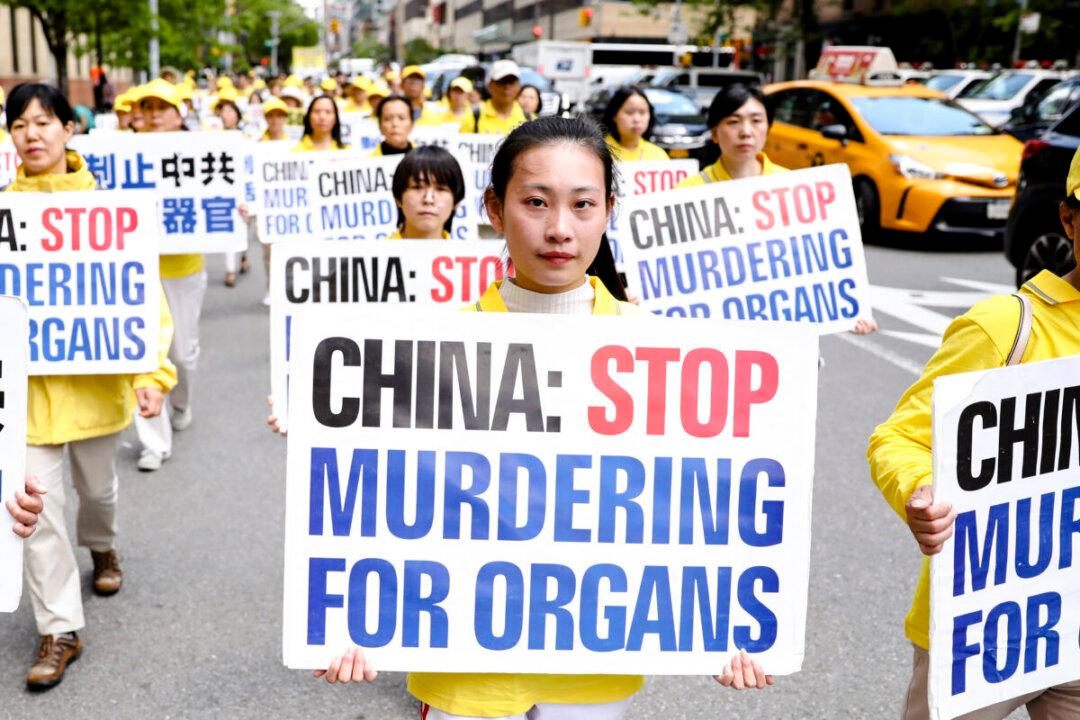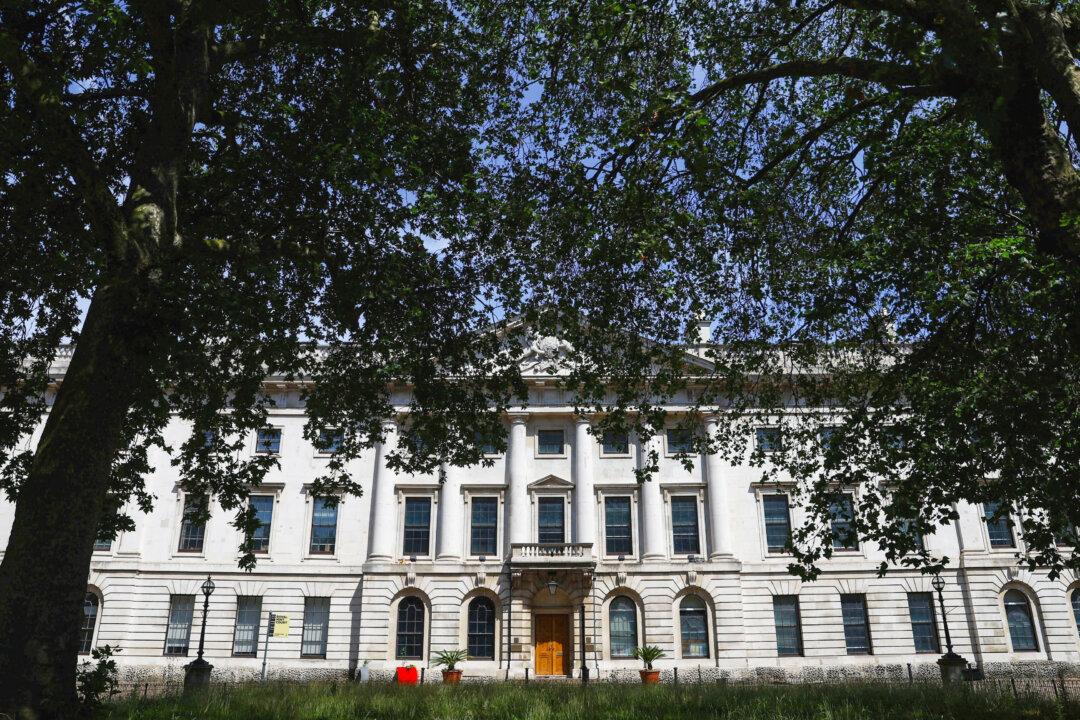The Irish government doesn’t have “one iota of a plan in place at the moment” to help farmers achieve the goal it imposed to reduce 25 percent of greenhouse gas emissions, a rural lawmaker said on Thursday.
Despite ministers’ promise that no animal will be culled, TD for Galway East Seán Canney said he doesn’t believe the goal will be achieved without the culling of cows, which would, in turn, increase overall global emissions due to carbon leakage, and exacerbate the risks to food security.
Climate Action Plan
The Irish government last month set the amount of greenhouse gas emissions each sector has to reduce by 2030 as part of its “Climate Action Plan,” which was published after parliament passed a law committing Ireland to slash emissions by 51 percent by 2030 and reach net zero by 2050 at the latest.
Some ministers reportedly pushed for a 30 percent target for agriculture, the upper limit set out in the action plan, but farmers and rural lawmakers have resisted going over 22 percent.
Farmers are promised “generous financial incentives” and “an additional financial package in Budget 2023″ that are yet to be specified.
‘No Plan to Achieve It’
Speaking to The Epoch Times on Thursday, Canney said no plan or strategy on how to achieve the target had been discussed during the negotiations.“Certainly if farmers are to have their emission reduced by 25 percent, that is fine,” the lawmaker said. “But we’ve no plan to achieve it.”
“Where is the money coming from? What is the budget to help the farmers get this achieved? ... Absolutely we are still standing still. We are not moving,” he said.
Canney said he believes that “there is no plan on how we’re going to reduce the emissions on the farms other than culling the number of cows that we have.”
Having previously described the arbitrary target as a PR stunt, Canney said he still believes it is.
“It’s a PR stunt to appease people who are looking for change. ... But I cannot see it happening without a plan,” he said.
Cullinan, the head of the IFA that represents most of the Irish farmers, told The Epoch Times that farmers had been prepared to take on a 22 percent target, which would be “hugely challenging,” and a 25 percent reduction would be “extremely difficult and challenging for the agri-sector to achieve.”
Cullinan said farmers have already “adopted a lot of new measures to reduce emissions” such as turning to protected urea fertilizers instead of calcium ammonium nitrate, using low emission spreading techniques to apply organic fertilizer and agreeing to reduce the use of inorganic fertilizer by 20 percent.

He’s also optimistic about eventually reducing biogenic methane emissions, but said farmers “need time” for new technologies being trialed, such as feed additives for cows, to come to fruition.
According to Cullinan, there’s also a proposal for farmers to build anaerobic digesters, which would turn manure, grass, and crops into fuel, but the resulting emissions reduction would be calculated in the energy sector rather than agriculture.
Economic And Social Impact
“If you look at sustainability, there are three pillars: the economic, social, and environmental,” Cullinan said.He argued that the government has not complied with its own climate law that requires it to consider the social and economic impact and the carbon leakage risk before implementing climate measures.
Food Inflation and Carbon Leakage
Cullinan said that the cost of producing food is already going up due to the soaring inflation, and the European Union’s Common Agricultural Policy fund, which was used to compensate farmers to produce affordable food, has been increasingly used on environmental measures.“Thus for farmers to continue doing what they’re doing, there’s going to have to be food inflation. Somebody is going to have to pay more for the food,” he said. “You can’t expect anybody producing food and not make a margin from it.”
Asked if young Irish farmers are turning their backs to the sector as a result, Cullinan said: “It’s a challenge. In Ireland, similar to other countries across Europe, the age of farmers is getting older. And that’s why it’s very important ... [to] ensure that there is a pathway or roadway for young people that want to come into agriculture.”
Cullinan said he’s worried that people won’t be able to afford enough food to eat, especially amid Russia’s invasion of Ukraine, which inhibited food exports from two major food producers.
“I believe, in life, there are two essentials for everybody. Number one [is] to have shelter and the second one is that everybody will have enough to eat,” he said. “I think in this debate, it’s important we keep all of those things in mind as well.”

Canney also said that if herds have to be culled, farmers’ income and food production will be reduced, food prices will go up, and the market will be distorted to allow carbon leakage.
“And we will have other competitors coming in and some of them may not be producing beef like we’re producing it, and we‘ll end up with a situation where we’ll be adding to the carbon footprint globally by doing something like this,” Canney said.
Canney said Ireland is “producing very good quality” dairy and beef, ranking “number one and number three in Europe, in terms of dairy and beef production and the quality of it in terms of carbon emissions.”
Biomethane
Cullinan also argued the government failed to consider “the way that biogenic methane is treated.”Some 60 percent of Irish agriculture’s greenhouse gas emissions are biomethane from cattle and sheep.
Meaningful Impact
According to official figures, in 2018, Ireland’s agriculture emissions add up to about 22.3 megatons of CO2, representing 35.2 percent of all emissions in Ireland and less than 0.07 percent of the global emissions that year.Assuming there will be no carbon leakage, reducing a quarter of emissions in Irish agriculture would mean less than 0.02 percent of the reduction in global emissions.
Other Sectors
Apart from farming, the electricity sector was given a mandatory target to cut emissions by 75 percent by 2030, compared to the figure in 2018. The transport sector has to slash emissions by half, public and commercial buildings by 45 percent, residential buildings by 40 percent, industry by 35 percent, and other sectors by half.Asked how the other sectors are to meet their emission reduction target without blackouts or other disruptions, Canney said the targets seem to be a “knee-jerk response ... which I don’t know they can be achieved without having a plan, and as well as that, it’s going to cost a lot of money to put that plan in place.”
Emission reductions in transport and buildings heavily rely on using electricity as an energy source instead of fuel, but Canney said Ireland has “a complete lack of understanding of what we need to do if we’re to get wind energy” and has been “far behind” in developing renewable energy in general.
Citing an example from his own constituency, Canney said a local wind farm has to be decommissioned, “with the loss of energy for 64,000 houses.”
The 70-turbine Derrybrien Wind Farm, located in Derrybrien, south Galway, caused a massive landslide in October 2003 when tonnes of peat were dislodged and polluted the Owendalulleegh river, resulting in the death of 50,000 fish.
The Irish government has been fined €5 million by the Court of Justice of the European Union for not carrying out an impact assessment study ahead of the project.
In March this year, ESB, the state-owned electricity company that constructed the project, said it will decommission the turbines.
Canney said he believes there’s a “huge potential in the Irish Sea and in the Atlantic Ocean” to build off-shore wind farms, and that Ireland needs to explore hydro generation and other energy sources, but they will take time.
The Epoch Times contacted the Department of Agriculture, Food, and the Marine, and the Department of the Environment, Climate, and Communications for comment.





